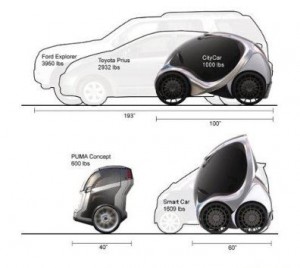by James A. Bacon
Et tu, Hugo?
Del. Tim Hugo, R-Centreville, has proposed eliminating Virginia’s motor fuels tax and replacing it with a 0.9% increase in the state sales tax, the Times-Dispatch reports today. That measure, combined with the allocation of an additional 0.5% of the sales tax to the Commonwealth Transportation Fund, would raise a half billion dollar more for transportation in Virginia per year.
Hugo’s proposal follows a measure submitted by Governor Bob McDonnell to transfer a sliver of revenue from the sales tax to transportation, a bill sponsored by Del. Chris Stolle, R-Virginia Beach, to hold a Hampton Roads referendum for a regional sales tax increase, and a bill sponsored by Sen. John Watkins, R-Powhatan, to increase the wholesale tax on motor fuels.
Under political pressure from local governments and business lobbies to “do something,” the General Assembly is more inundated than Superstorm Sandy with ideas for hiking transportation taxes. But it’s drier than the Sahara when it comes to ideas for ensuring that the money is spent effectively, much less to advance a transportation system for the 21st century. The only figure who halfway makes sense is House Speaker William Howell, who says he might put the brakes on any tax increase because the legislature does not have time during its 45-day session to craft major legislation.
I have little confidence that Virginia’s political class will come to its senses in a year’s time, but we can always pray that the wildebeest-like stampede to higher taxes might relent long enough for reason to take hold ever so briefly.
What would a reasoned approach to transportation reform look like? For starters, it would recognize that the United States (and indeed the world) is on the brink of the greatest revolution in mobility since the invention of the automobile more than a century ago. We can either squander money on 20th-century transportation strategies, which are increasingly obsolete, or we can invest money in projects that will help us pioneer the future in a way that will make Virginia more livable, sustainable and economically competitive.
Every elected official in Virginia, every lobbyist and every civic leader needs to read “Reinventing the Automobile: Personal Urban Mobility for the 21st Century.” This slender, amply illustrated volume describes how the Information Technology revolution is transforming the automobile into something that no one imagined even five years ago.
As the co-authors observe, today’s automobiles are way over-engineered. “Today a typical automobile weighs 20 times as much as its driver, can travel over 300 miles without refueling, is able to attain speeds of more than 100 miles per hour, requires more than 100 square feet for parking, and is parked 90 percent of the time.” By designing cars to specifications that match the requirements of personal urban mobility, it soon will be possible to mass produce vehicles that reduce mass, save energy, ameliorate congestion and diminish the space consumed by parking — all while dramatically cutting the cost of automobile ownership and supporting infrastructure.
“Reinventing the Automobile” describes four inter-locking developments. The first is the emergence of a new “automotive DNA” allowing for Ultra Small Vehicles (USVs). These electric vehicles designed for urban use, prototypes of which have already been built, weigh less than 1,000 pounds, have top speeds of 25-35 miles per hour, have a travel range of 40 miles or so and take up one-third the space of conventional automobiles.
The second trend is the rise of the “Mobility Internet,” in which USVs equipped with sensors and wireless are able to communicate with one one another, allowing them to travel safely at closer distances, effectively increasing the capacity of urban roads. Eventually these cars will be capable of driving on auto-pilot, which will make them safer.
A third development is the integration of electric USVs with the smart grid, in which electric power companies use time-of-day pricing to balance load demand and offset the cost of green but intermittent power sources like solar and wind power. Eventually, hydrogen fuel cells will replace conventional batteries to extend the range of electric vehicles.
Fourthly, advances in IT and sensor technology will make it possible to develop electronically managed, dynamically priced markets for electricity, scarce roadway capacity, parking and even shared-ownership vehicles. “These markets … will depend on ubiquitous metering and sensing, make use of powerful computational back-ends, provide price signals and incentives that regulate supply and demand, and motivate sustainable activity patterns within cities.”
This is not pie-in-the-sky stuff. Many pieces of the system are coming into the market already, and the technology for the rest is under development. The impact on urban development will be mind-boggling. Imagine how human settlement patterns will change if the new technology makes it possible to boost the capacity of existing streets and thoroughfares while narrowing lanes and slashing the footprint devoted to parking spaces. Just think of how much more pedestrian- and bicycle-friendly we can make our communities. Imagine how much more livable densely populated urban areas will become. Write the authors:
Over time, as this process gathers momentum, we will see the increasing emergence of cities that provide high levels of personal mobility but are safer, quieter, cleaner, more livable, more energy efficient, and more sustainable that those of today. Cities that don’t adapt fast enough will find themselves at an increase competitive disadvantage with those that do.
Here’s what really gets me. You’d think Northern Virginia’s super tech-savvy businesses would get it. IT is their business. The integration of complex systems is their business. But where are they in this debate? Are they taking the lead? No, they’re backing business-as-usual thinking articulated by the region’s real estate interests. How very, very sad. An extraordinary opportunity is slipping away. Sometimes, I just want to cry.



